
Editor’s note: This “preliminary” article, composed by two-time fellow Arnold Thackray (1973–74, 1983–84) first appeared in the 1984 CASBS Annual Report, as the Center was approaching its 30th anniversary. This origin story is the pre-history of a history.
Notes Toward a History
Arnold Thackray has been invited by the Board of Trustees to write a history of the Center. The following “Notes” are based on a talk given to the Board on April 27, 1984.
I. The Charm and Peril of CASBS History
There are very obvious challenges in writing the history of any modem institution. The events of the period since World War II are close to us, yet our memory of these events is often hazy or misleading. The increasing dependence on typewriters and copying machines in this era means that there has been a steady multiplication in the number of documents produced; yet, in a paradoxical balancing of technologies, the telephone and easier travel have allowed major decisions to be reached while leaving the material record devoid of information. Thus the historian is obliged to wade through an unprecedented amount of paper for what often proves to be a meager return. Also, the documents that do exist from this era may still be in private hands, inaccessible because of deliberate policy or through the chaos of circumstance. Few ordered archives await the historian bold or foolish enough to confront the very recent past. And if all this were not enough, there are further special difficul ties attached to any study of recent social science. The history of science is itself a young discipline - indeed it may be said to have grown to maturity in America alongside (if not always in communion with) the social sciences. In defining their field historians of science have tended to focus on the chronologically remote (medieval, Renaissance, early modem), the European (Greece, Italy, France, Germany, Britain), and the physical or biological (Copernicus, Kepler, Newton, and so on, to Darwin). There is little by way of a developed tradition of scholarship on twentieth century natural science, less still on specifically American topics, and almost nothing at all on such a distinctively American theme as social science since World War II.
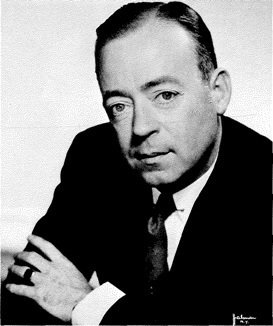
Nonetheless, that theme cries out for study by historians. It might reasonably be argued that social science is the most distinctively American of all the branches of science, and hence deserving of attention by all who would understand American culture. Again, it is in social science that we see most clearly the tension between the basic and the applied, and the challenge of understanding their interconnections through patronage, problem orientation, and purpose. Tensions and interconnections of this kind have come to characterize almost every area of science and technology and to command the attention of scholars, administrators, and policy people. Finally we might note that the social sciences are themselves at the end of an era, and the time has come for stock-taking, re-definition, and the charting of new directions. In that task an accurate, documented, serviceable history will be indispensable.
All of this suggests the charm and the peril of a history of CASBS. The charm because CASBS is one central institution of modem social science, born out of the experience of war and its aftermath. The peril because we know too little, and are too close, to attempt those calm, olympian judgments to which all historians aspire. Nonetheless, someone must begin the historian's work, at least in a preliminary way. My choice was to proceed on two fronts. On the one front I tried through reading, conversing, and reflecting — to build a framework for the Center's history. On the other, my aim was to fashion some pieces of the story and see how they might fit that framework. In my next Note I give one such piece of the story, while my third Note reveals — in "zero-order draft" — the outline for the completed history.
II. "A Sort of Professional School"
Because of my work, I was often in touch with former Fellows. Uniformly, their first response on learning where I called or wrote from was (tone of nostalgia), "Oh, the Center!" Then (tone of anxiety), "It hasn't changed, has it?" They were greatly relieved when, on the basis of comparison with my earlier stay in 1973-74 and of my own historical investigations, I was able to assure them that no, the Center hasn't changed. Indeed, the Center's mission and style have been remarkably stable for three decades. That stability is remarkable in it self, when set against the endless shifting tides of fashion apparent in so many facets of our culture. It testifies to the way the Center quickly assumed and has continued to maintain a set of purposes that have been valued very highly not only by scholars but also by modem patrons of scholarship. That stability is even more remarkable given what preceded it. For the idea that became the Center took varied, shifting forms over the three years that led up to the selection of a site and of a first class of Fellows.
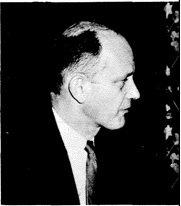
Inevitably, the story begins with the Ford Foundation, and its struggles to reorganize in ways that would prevent its being swamped by the tidal wave of money about to descend, following Henry Ford's death in 1947. By early 1951, the previously small and sleepy Foundation had commissioned and endorsed the Report of an ambitious "Study Committee," and had assembled the core members of the staff that would be necessary to carry out the programs suggested in that Committee's Report.
The Report itself was largely the creation of a remarkable San Francisco lawyer, H. Rowan Gaither. Gaither had become intimately familiar with the wartime achievements of physical science, through his role as administrator of the Radiation Laboratory at MIT. He was also central to the creation and continuance of the RAND Corporation in the later 1940s. By way of balance to these emphases on the physical sciences and defense, the "Study Committee" and its Report to the Ford Foundation were notable for their emphasis on the peaceable and practical possibilities of social science. The Report identified five areas in which the Foundation might usefully employ its greatly enlarged wealth: areas I through IV were in what we might call problem solving or applied social science, but area V was to be the strengthening of basic knowledge of "Individual Behavior and Human Relations."
Areas I through IV immediately took the lion's share of Ford monies, time, and attention, as the Study Committee itself had recommended. Abstract knowledge of "Individual Behavior and Human Relations" — that is, basic research in the social sciences — was not something that the Foundation's trustees viewed with great enthusiasm. But Gaither had a deep faith in the necessity and the potential of social science research as an underpinning to practical action in the dawning nuclear age. By early 1951 he was serving in a part-time capacity as an "Associate Director" of the Foundation. And, gently but persistently, he sought to breathe life into the Foundation's mandate for "Program Area V."
His first act was to hire two part-time consultants — one (Donald Marquis) who had served with him on the original Study Committee and one (Hans Speier) from the RAND Corporation. Together, Gaither, Marquis, and Speier set to work on the difficult tasks of enlisting academic support for Ford's entry into basic social science while quieting interuniversity and interdisciplinary rivalries; of overcoming the skepticism, inertia, and hostility of the Foundation's own trustees; and of finding rewarding turf in a field long occupied by such other philanthropies as the Rockefeller Foundation and the Carnegie Corporation. And, to prevent life from being dull, it was implicitly clear to all three men that they must give away money at a very rapid rate if Program V were to be a meaningful force within the Foundation, given the unprecedented scale of other Ford activities.

When Marquis, Speier, and Gaither met to gether for the first time on 26 January 1951 in New York City (the Foundation itself was head quartered in Pasadena, California), their ideas were both ambitious and unfocused, ranging from the need for "area centers" to "strengthening the UN." They did, however, begin to list the names of experts they might consult. In light of later developments, it is interesting to note that Gaither and Marquis had both been undergraduates at Bay Area institutions (Berkeley and Stanford, respectively) and that their list of ten "experts" included Ernest R. Hilgard, Robert K. Merton, Robert R. Sears, and Herbert A Simon. By 23 February, Gaither and his two consultants had agreed on the desirability of "a full-time staff man" and on the need for Gaither to "establish a reasonably close personal relation ship with a half dozen or more leading behavioral scientists." What Program V would be focused on remained vague, and a "two day informal conference" with the "leading behavioral scientists" seemed called for. Meanwhile monthly meetings of the trio continued. On 24 April Marquis identified (among other possible topics for discussion on 30 April in San Francisco), "Enrichment of research training opportunities in a selected number of universities by the establishment in each of a field training facility for community study and by provision for coordination of these facilities in the interest of accumulative research and methodological contributions." If this formulation is, arguably, the first foreshadowing of what became the "Center idea," it did not, apparently, com mand instant enthusiasm. Instead, the conversation shifted in May to the more urgent task of coordinating the still-embryonic Program Area V with the many activities being financed in areas I-IV.
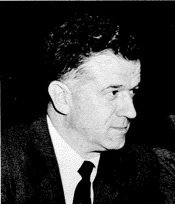
To aid this coordination, Marquis and Speier urged Gaither to think of Program V as having four parts — one of which was resource development, that is, "the training of research personnel, the development of research facilities, the support of scholars in separate centers of study or through exchange programs, and the support of agencies or institutions in the behavorial sciences." In response Gaither, perhaps with a little exasperation — for his colleagues elsewhere in the Foundation were reporting "a growing concern [in the universities] that the Foundation may not develop the fifth program" — reported that Paul Hoffman, the Foundation's President, had "re cently expressed the view that perhaps one or two Program Five grants should be made at an early date." And, Gaither added, "If this is to be done, what projects would you recommend?"
At this juncture, two significant developments occurred. Speier wrote a 12 June memorandum summarizing his ideas on that day's staff discussion of a "Conference or (Annual) Institute on the Study of Human Behavior." This memo pointed out — inter alia — how the conference "could be a one-shot affair or ... a recurring event, designed to focus the attention of social scientists on ... the Foundation in its Program Five." Already, though it was uncertain what substantive tasks the conference or institute would undertake, its utility in making Program Area V visible and attractive had been adumbrated. The second development, almost coincident with Speier's memo, was the appointment of Bernard Berelson as "senior staff officer" for the program. The thirty-nine-year-old Berelson was Dean of Chicago's Graduate Library School (Hoffman was a Chicago trustee, and the Foundation had strong links with the university). Berelson had served under Speier in the Foreign Broadcast Intelligence Service in World War II, and from 1944 to 1946 he had been a project director at (Paul F. Lazarsfeld's) Bureau of Applied Social Research, in New York.
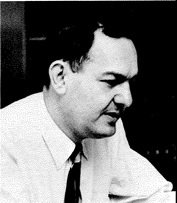
In Berelson, Program V found its first full-time advocate and one possessed of energy, charm, and determination. Berelson moved to Pasadena in July 1951 and set to work with a will to connect the·still inchoate agenda of the Gaither-Marquis Speier trio with the academic marketplace of ideas. Berelson was not only a Chicago Ph.D. and a former colleague of Speier's, he was also very· close to Lazarsfeld, with whom he had coauthored The People's Choice in 1944. It is thus not surprising that one item that Berelson quickly found to be relevant to the Program V agenda was Lazarsfeld's belief that the time had come to create "a sort of professional school for social science."
Lazarsfeld — an indefatigable projector of pro grams, bureaus, institutes, and schools of a wide interdisciplinary scope-had begun to draft a proposal for "professional training in social research" as early as October 1949. In this as in so many other of his activities, he was seizing and making explicit new trends emerging in the social science community. The late 1940s were a period of sharply increased enrollment in social science courses in colleges and universities, and of new employment opportunities in applied social re search. The Social Science Research Council had devoted its Bulletin No. 58 in 1948 to The Recruitment, Selection, and Training of Social Scientists. It had identified "an obvious shortage of social scientists coincident with a rapidly expand ing demand for their services," and it had declared that "an immediately feasible step toward raising the inadequate standards of social science re search training which now generally prevail would be the establishment of experimental model training programs in a few universities." These programs would serve as a social science analogue to the "numerous new vocationally ori ented graduate programs [which] have been inaugurated in recent years."
Lazarsfeld was confident that Columbia University was the natural home for such an experimental model training program, for "Columbia has always been in the leading position when the social sciences took new turns." By January 1950 his original nine-page memo had grown to 56 pages. Later that year it had become a 107-page "Proposal to establish an institute for training in social research," coauthored by Robert Merton and commanding considerable attention at Columbia. In the full-fledged proposal, Lazarsfeld admitted with disarming candor that "it is not easy to describe the work of an institute that does not yet exist." Nonetheless it was clear that "the question of training materials and training procedures is really the central one." Social research was too far advanced for apprenticeship to be wholly adequate as a means of training. The institute should therefore spend a "year of planning" in which case studies and curriculum materials were developed, then go into action as a five-year experiment.

By Spring 1951 Lazarsfeld was pursuing his proposal with the Ford Foundation, which — as we have seen — was not then organized to respond. He was also holding out to Berelson (still in Chicago) the idea that Berelson should direct this new institute, and conducting negotiations with such staple funders of the social sciences as the Rockefeller Foundation. Rockefeller duly obliged in October 1951, with a two-year $120,000 "Grant to blueprint a plan for professional training in social research," to run from 1 February 1952.
By October 1951 Berelson was unavailable as a possible director of a Rockefeller institute for training in social research, thanks to his new position at Ford. Instead he was actively at work adapting the idea to Ford Foundation realities. In consultation with Gaither, Marquis, and Speier he formulated a master memorandum on Program Area V. This memorandum not only covered a host of organizational questions (Would Program V become a "Fund" like the Fund for the Republic?), but spelled out in considerable detail the substantive areas in which the program might operate, and discussed staff and budget implications. By far the largest budget item was $500,000 a year for a "training institute."
Anxious to recruit the advice and good opinion of academic leaders, Berelson hurriedly arranged New York and Chicago meetings for late November to discuss a draft of the master memorandum, or "proposed plan for the development of the behavioral sciences program of the Ford Foundation." At the New York meeting, the reactions of Merton epitomized the ambivalence that the idea of a free-standing institute would cause: "Institute — first impulse — a catastrophe. Second thought — capacity of top-notch people at their present places not being utilized. Maximize potentialities via institute device." At the Chicago meeting "there were two points of view.... One, made most articulate by Ralph Tyler, was that the institute was an idea worth trying except that it probably is not feasible. He thought that the organization would be very difficult to bring about and that it needed to have lower levels and fuller collaborative relations with the universities. The other point of view, advocated by Bert Hoselitz and Herb Simon, was that the institute wasn't feasible and that it wasn't desirable either." (Letter from Berelson to Speier, 3 December 1951).
If remarks like these did not constitute a ringing endorsement, neither did they prevent Berelson and his colleagues from pressing ahead. The Ford Foundation trustees were scheduled to review the plans for Program Area V early in February 1952. These plans required a centerpiece, and the training institute was the only candidate to hand. Reflecting on the New York and Chicago meetings, Berelson wrote in that same letter how it might make sense "to think of the institute as perhaps an inter-university sponsored affair with a core of three or four people who would be there to provide continuity for a period of, say, five years and with the others coming in at different points of time and for different periods of time from six months up to two or even three years. These people would then take leave from the universities and come back to them.... I know that you will see all the advantageous implications of such a scheme, both intellectually and politically."
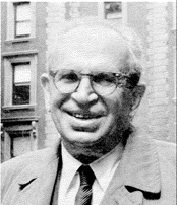
By late December 1951 Gaither had convinced the President and other Associate Directors of the Ford Foundation that it made sense to present Program V to the trustees for action, that primary emphasis would go "to activities directed toward the technical development (training, etc.) and secondary emphasis to the substantive development (problem-oriented research) of the behavioral sciences," and that the first priority would be a central institute for training behavioral scientists funded at not less than $650,000 per year. In February 1952 the Ford Foundation trustees approved the "proposed plan" in all its aspects, thus confirming Gaither's stature and skill as an administrator.
The training institute was the central element in the Ford plan, and lent visibility and purpose to the whole. For that very reason, it was important to press ahead and develop detailed specifications for the institute. Bernard Berelson had already made a further trip to New York and Chicago in January, to recruit support. On 29-30 March an ad hoc committee of behavioral scientists and administrators was convened in New York "for advice on the best ways of meeting this problem." The problem was that, in the need to develop the agenda for Program V, it had not been possible to define fully, or develop a clear consensus on, the purposes of the institute, which was now — by general agreement of those close to the Ford Foundation, if not of the wider social science community — the central element in Ford's new program. The "proposed plan" had made it clear that the institute would be at or near a major university, but with only loose administrative ties to that university. Adapting Lazarsfeld's phraseology, the institute would be designed as "a sort of professional school for the behavioral sciences." Its staff would consist of a core of about four fellows serving for five years, perhaps on extended leave from their home institutions. Another six or more staff fellows would serve for shorter periods of six months to two years. All the staff would engage in their own research programs and "the major staff members could be accompanied by a small team of their best assistants." The staff would also develop the best possible curriculum "with due attention to problems of integration and consolidation within the field as well as to the problems of relations to neighboring fields." The students would be 30 to 35 of the best young (postdoctoral) people in the field, appointed for a period of two or three years. Over the years the institute would provide the universities with over two hundred people, who would constitute "a whole generation of leaders in the field, with all that implies."

The Gaither document was disarmingly clear on all these points. It thus contained both more and less than Lazarsfeld's plan — less in that the mechanisms of training were barely addressed, more in that it made concrete a very European vision of one central institute, in which major professors would train the next generation of leaders. At the same time the "proposed plan" tacked on many other items. Large parts of the institute's research program "would fit the Foundation's interests." The research publications of the institute "could generally serve as models for the field." The institute's work would "guide the research of large numbers of people in the field" and (a characteristically Berelsonian touch) the institute could produce some of the "propositional inventories" that social science needed so badly. In short, the institute was to serve both the bureaucratic needs and the intellectual hopes of the Ford Foundation's officers.
Faced with all these suggestions, the ad hoc group of advisors was able to agree that what was needed was one national institute, not a series of regional centers. It also agreed that advanced training in behavioral science would be the purpose of the institute, that there were "now simply too few behavioral scientists of outstanding quality and genuinely high competence," and that it was critical to attack the problem at the postdoctoral level. In his summary of the discussion, Berelson presented a reworked and more detailed outline of the proposed plan for the institute.
That outline suggested the institute have its own board of control (six scientists and three laymen). The Director should be "a man of high respect in the social sciences and in university administration generally." The membership of the institute would include four types of people. A core group of three to five senior fellows would serve "for at least three years on staggered terms." (The duration of the institute itself remained uncertain — a minimum of five years was all that had been agreed to — and hence permanent fellowships as such were not discussed.) In addition, some seven to ten senior fellows would serve for periods from six months to two years, as before. Thirty to forty junior fellows would spend one to two years at the institute. And foreign scholars, "refresher" candidates from industry and government, etc., would make up another small group of special members in attendance for relatively short periods of time and for particular purposes. In this formulation, the institute might accommodate a few doctoral candidates working on their dissertations, in place of the small teams of research assistants to the senior staff.

Despite the "behavioral science" label, fellows should be included from business, law, philosophy, biology, humanistic studies, mathematics," and allied fields. "If the range was broad, however, the purpose was narrow — "the emphasis should be placed clearly, directly, and continuously upon the problem of research training in the behavioral sciences." The junior fellows might have a core program in their first year, and more specialized programs in the second year. Training methods might include apprenticeship, small seminars by senior fellows, participation in special conferences, and intensive analysis of important mono graphs. The cost was estimated at a convenient $645,000 a year, in line with the program presented to the Ford trustees. Finally, the institute "should be located in the East because of the concentration of the relevant personnel and institutions in that part of the country." The most likely area was "in the triangle New Haven-Princeton-Philadelphia." With so much agreed, it might appear that there was little left to discuss. However, with benefit of hindsight, tensions and contradictions are apparent in Berelson's summary. For instance, the idea of training by apprenticeship was set cheek-by-jowl alongside the assertion that the relationship of senior and junior fellows should be "that of research colleagues," not teacher and student.
The ad hoc committee agreed that a small planning group should be convened to flesh out the March plans. The group's members included Merton, Harold D. Lasswell, and Samuel Stouffer; Ralph Tyler served as chairman. Their unanimous report — entitled "The Center for Advanced Study in the Behavioral Sciences" — was delivered in June 1952, in time for Merton and Tyler to make a late-June oral presentation to the Ford trustees, meeting in Pasadena.
The report of the planning group reiterated the shortage of top-level personnel and argued the need for postdoctoral education. The education could best take place in an independent center, complementing rather than competing with individual universities. While much of Lazarsfeld's vision remained, the emphasis of the report was more egalitarian, and more concerned with research and mutual education than with training as such. The Center should be established "for a period of not less than five years." Its senior fellows would consist of only one group of ten to fifteen individuals, serving on leave from their home institutions for periods normally ranging from six months to two years. The possibility was left open that more extended leave might be re quired for "three or four key people." The thirty to forty junior fellows would come for one or two years, "with or without institutional appointments to which to return." And there would be a small group of special members (e.g., foreign scholars on tour).
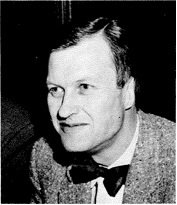
In accord with the rapid pace of action of the Ford Foundation in those years, the June 1952 report proposed that the Center's governing board and its Director be appointed that summer, that senior fellows be enlisted in the fall, that junior fellows be selected by February 1953, that "detailed questions concerning such matters as location, personnel qualifications and selection, content, organization, university relations [and] budget" be settled as the academic year progressed, and that the Center should open in the summer or fall of 1953.
The actual program of work at the Center ("content") remained a difficult issue. Lazarsfeld was even then developing his "training materials" for a professional school. However, the planning group contented itself with observing that "the problem of advanced study in this field has not been attacked on any large scale, and considerable experimentation will be needed in order to determine the most appropriate methods and procedures. Accordingly freedom of action must be left to the Center to develop a study program of high quality." The report did go on to adumbrate various available patterns of study, including apprenticeship, the use of training materials, and close criticism of classic works. And, to mollify Lazarsfeld, it made a point of quoting approvingly from his 1950 proposal to establish a training institute in social research:
Perhaps this is the very time, when the problems of adequate training in social research are in flood tide, for establishing an academic island in which an appropriate training program can be thought through and worked out. More than ever before, and precisely because the social need is so great, it is necessary to escape the pressures of the immediate situation. [Universities cannot] find the relative tranquillity needed to develop and to test an appropriate plan of training and education in social research. Yet a distinctive experimental plan for training in social research is clearly needed.
Lazarsfeld could read the 1952 June report as congruent with his own goal of a professional school. A more distant and more astute observer sensed clearly how the "Center idea" was changing. Donald K. David, Dean of the Harvard Business School, trustee of the Ford Foundation, and valued confidant of Henry Ford II, wrote to tell Gaither that the report was a much stronger document than any of the previous drafts he had seen. However, "the concept of the Center as an academic island bothers me." More than that, the report lacked the concept of service to the community and of administration as a discipline — "business, whenever it is mentioned, is always coupled with law." There was little indication of how the new knowledge that flowed from the Center would be used in practical affairs. And the report "seems to be uncertain of the use of the scholars' time. Frankly, the proposal sounds something like a merry-go-round; everybody is supposed to work with everybody else."

These were strong and perceptive criticisms. They indicated that the idea of the Center was neither completely clear nor wholly uncontroversial. Nonetheless, the Ford Foundation trustees received Merton and Tyler with enthusiasm, and on 22 June 1952 voted to underwrite the proposed Center for Advanced Study in the Behavioral Sciences for an initial year of planning and five years of operation. In the event, the Center did not open until September 1954. And it was located in California, not in the East. And all its fellows were equal, and all stayed one year. And training materials were never seriously employed. And looking back on these events some twenty years later Bernard Berelson would say, "Chicago won the first battle ... but Harvard won the war." To explain why all these things were so is a story for another day...
III. The History of CASBS:
A Zero-Order Draft
A. The Origins of CASBS
1. The Social Science Community and the Experience of War. The academic community was small but securely institutionalized before World War II. A pattern of philanthropic support by private foundations had been developed (Rockefeller and Beardsley Ruml, etc.). Certain national institutions had been created to facilitate specialized training and research, and interdisciplinary cooperation (Brookings; National Bureau of Economic Research; the Institute for Advanced Study; Social Science Research Council). The New Deal had created a context in which social science was easily linked to the formulation of social policy. The war itself brought a disruption of academic training, a demand for experts, and a piecemeal creation of interdisciplinary endeavors in government and the military services. The forming of personal links between individuals from different disciplines and the sense of the possibilities of applied social science — e.g. in survey research, in psychological studies, and in propaganda — were important consequences. The National Defense Research Committee and the Manhattan Project highlighted, by way of contrast, the fragmented organization of social science.
2. Reorganizing for Peace. The atomic era and the unstable peace. The prestige of physical science and the hope for an equally full-fledged science of man. Vannevar Bush and national patronage. The confusion between social science and socialism. The need for new agencies of social science: Bureau of Applied Social Research, National Opinion Research Center, and Institute for Social Research. The Social Science Research Council and the organization of social science research. The transformed demographics of academic social science. Paul Lazarsfeld and the idea of a professional school.
3. Enter Ford. Rowan Gaither, the Radiation Laboratory, and RAND. Henry Ford and the burden of philanthropy. The Ford Report. Gaither, Donald Marquis, Hans Speier, and the idea of Program V. Persuading the Ford board: ambivalence and the ideal of behavioral science. The Ford Foundation and Chicago. The network of connections. The hiring of Berelson.
4. CASBS Overdetermined. The Chicago school in social science, and Chicago styles in administration. Chicago, Columbia, and Stanford links in the first array of staff, advisors, and consultants. The need for visibility, for autonomy, and for the rapid spending of money. The problems of block grants, and of university rivalries. The answer: an independent institute for training social scientists.
5. Creating the Reality. Consultations within the Ford Foundation, with the initial advisory group, and with the planning group for the institute. An institute for training becomes the Center for Advanced Study. The appointment of the Board of Directors. The search for a chief executive. The choice of a site. Stanford Research Institute, Stanford University, and Berkeley. The race is on. The Center opens.
B. The Patterns of CASBS
6. The First Year. The unresolved questions: Who? What? For how long? The first year's answers. The creation of a style, and of a ritual. The power of the powerless staff.
7. Selecting Scholars, Directors, and Trustees. The initial five-year time scale, and the patterns of selection. The formalization of procedures. The constraints of funding: preorganized groups. The constraints of social mores: women, minorities, non-mainstream institutions. Repeat offenders. Stanford. The initial trustees. Plans for rotation and the static reality. The shifts of the 70s. The choice of Directors.
8. The Fruits of Learning. The fellowship year: a Guggenheim with feedback. Patterns in the reports of Fellows. Formal seminars and informal learning. The Mathematical Social Sciences Board. Group endeavors: e.g., general systems, primates. Early CASBS ideology and political science. CASBS and California institutions. Exemplary works — e.g., Thomas S. Kuhn, Leon Festinger. Conferences and summer institutes.
9. Financing the Crop and Transplanting the Seed. The early Ford view of the Center's financ ing. A dramatic change. The era of the ad hoc. The creation of a mixed economy. The precariousness of Center finances. The quest for endowment. CASBS and ideas for a Washington, policy, or other second center. The real influence-Wassenaar, National Humanities Center, and Berlin. Feedback to Princeton and Oxford.
10. CASBS and the World of Leaming. The latent functions of CASBS. Its role in the emergence of a national staff for the social sciences. The circulation and integration of elites. The challenge of the future. CASBS and the growth of social science.

